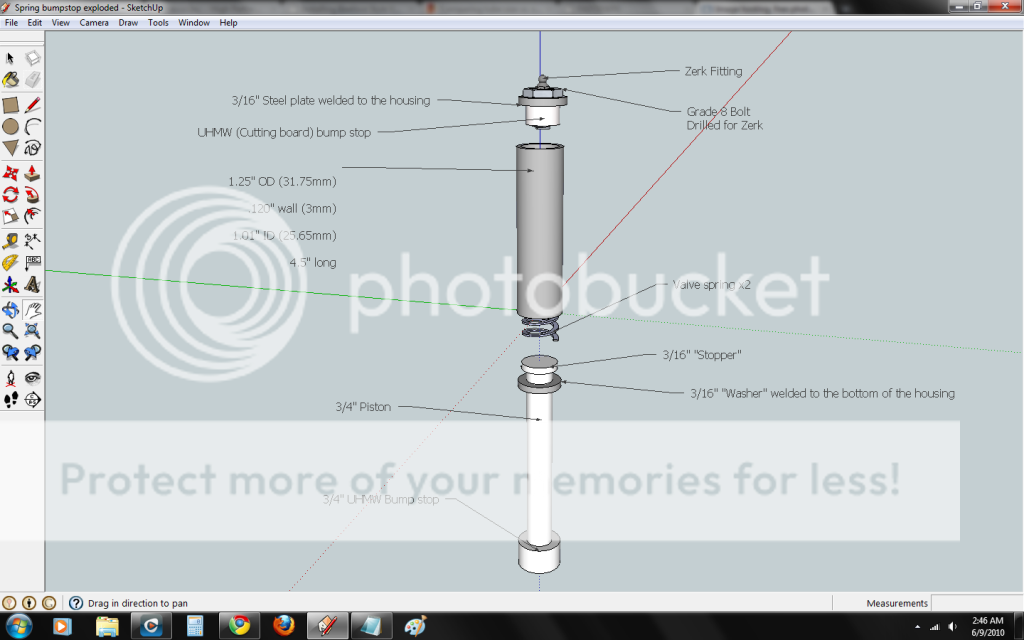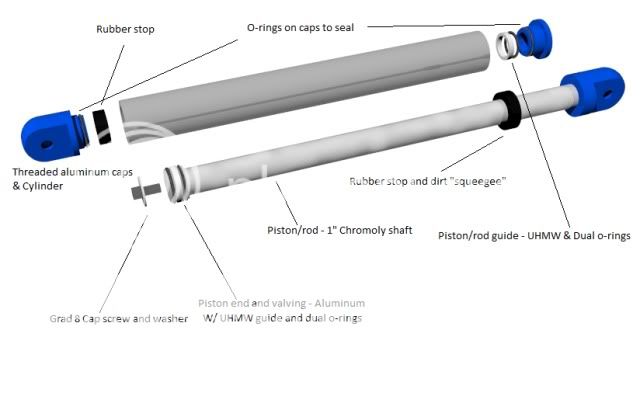93xjcowboy
NAXJA Forum User
- Location
- Savannah, GA
I was talking to my buddy about air bumps and he said he had seen someone do something similar to this. Its basically a poor mans air bump that I want to try and build as soon as I can handle a welding torch and grinder (just had hand surgery).
I will probably try and make the top so it can screw off but this is what I have so far. The Zerk fitting is so I can try and keep the springs quiet/happy. Should the "stopper be made of UHMW or steel? I dont see it taking much weight other than the springs and they will transfer the pressure to the washer on the end. The UHMW will act as a good seal/gasket and allow me run another gasket that wont fall apart right away.

I will probably try and make the top so it can screw off but this is what I have so far. The Zerk fitting is so I can try and keep the springs quiet/happy. Should the "stopper be made of UHMW or steel? I dont see it taking much weight other than the springs and they will transfer the pressure to the washer on the end. The UHMW will act as a good seal/gasket and allow me run another gasket that wont fall apart right away.


